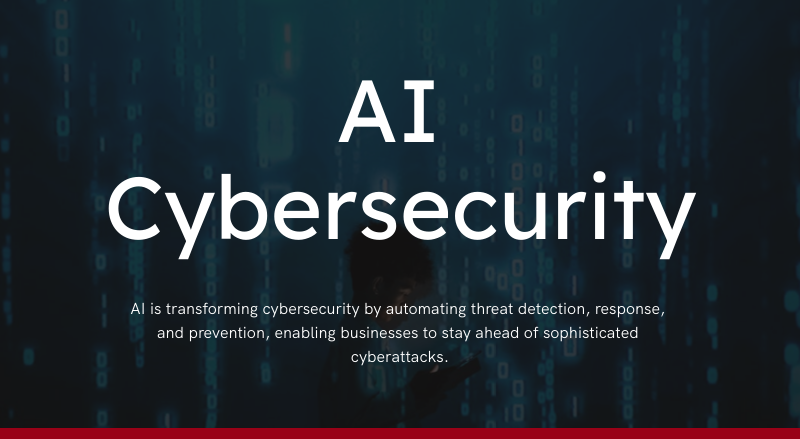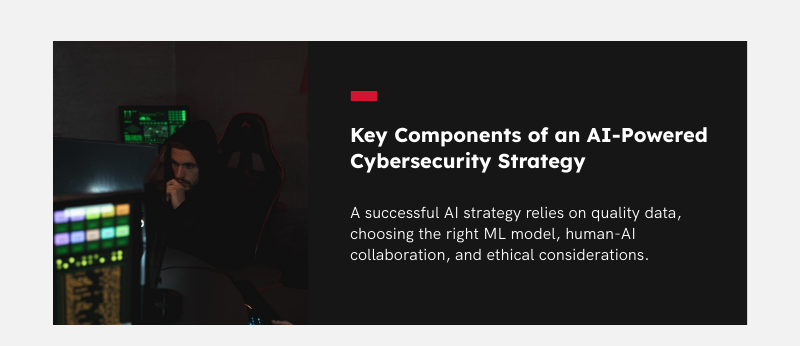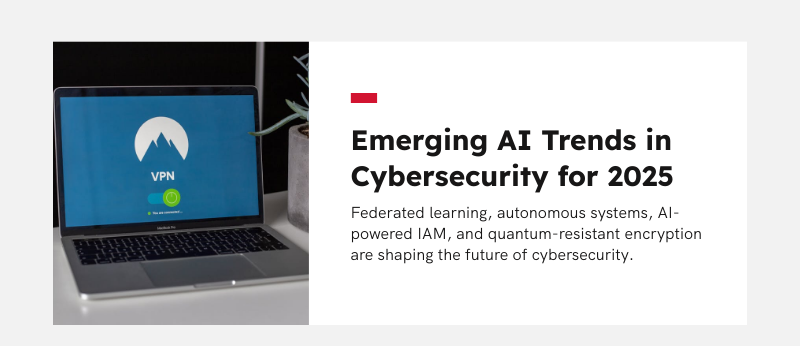As the digital landscape continues to expand in 2025, so do the threats that target it. Cyberattacks are not only more frequent but increasingly sophisticated, making traditional defenses insufficient for modern enterprises. Enter AI-powered cybersecurity — the next-generation approach to safeguarding business assets, reputation, and customer trust.
Artificial Intelligence (AI) is revolutionizing how businesses approach threat detection, response, and prevention. By leveraging real-time data, machine learning, and automation, AI-powered tools are helping companies stay ahead of cybercriminals. But with innovation comes complexity, and not every solution is equally effective.
The Rising Cybersecurity Threat Landscape
A Surge in Sophistication
Cybercriminals today are leveraging their own AI systems to execute stealthier and more damaging attacks. From deepfake phishing schemes to AI-generated malware, the threat environment is no longer reactive — it’s proactive and highly intelligent.
Common Attacks in 2025
- AI-generated phishing emails: These mimic internal communications with alarming accuracy.
- Zero-day exploits: New vulnerabilities are being discovered and weaponized faster than ever.
- Ransomware-as-a-Service (RaaS): Criminal syndicates offer ransomware packages for hire, expanding attack reach.
- Data poisoning attacks: Threat actors corrupt machine learning models to manipulate AI decision-making.
The Cost of Breaches
The average cost of a data breach in 2025 has surged past $5 million per incident, especially for sectors like healthcare, finance, and tech. Beyond monetary loss, the damage to brand reputation, customer trust, and legal liability is immense.
How AI Strengthens Cybersecurity
1. Threat Detection and Prediction
AI excels at detecting anomalies across vast data sets. Machine learning models can identify suspicious patterns, such as unusual login locations, erratic data access, or abnormal network behavior — all in real-time.
Benefits:
- Faster detection than traditional systems
- Ability to analyze encrypted traffic
- Predictive threat modeling based on historical data
2. Incident Response Automation
AI enables Security Orchestration, Automation, and Response (SOAR) platforms to autonomously contain threats. If malware is detected, an AI system can isolate the affected device, notify security teams, and initiate remediation protocols instantly.
3. User Behavior Analytics
AI can create behavioral baselines for each employee. When deviations occur — like accessing files at odd hours or copying large datasets — the system flags or restricts access automatically.
4. AI-Driven Firewalls and Endpoints
Next-gen firewalls use AI to inspect and filter traffic, while AI-powered endpoint detection and response (EDR) tools ensure endpoint integrity across devices — from smartphones to cloud instances.
Use Cases: AI in Action
Financial Institutions
Banks are deploying AI to detect fraudulent transactions in real-time. By analyzing transaction history, location data, and biometric patterns, these systems can halt suspicious activities before damage is done.
Healthcare
AI safeguards patient data by monitoring access logs, encrypting sensitive records, and identifying potential HIPAA violations through anomaly detection.
E-commerce
Retailers use AI to prevent credential stuffing, protect customer data, and optimize fraud detection during online purchases.
Key Components of an AI-Powered Cybersecurity Strategy
1. Data Collection & Integration
A successful AI system depends on high-quality data. Businesses must centralize logs, user activity, and network flows in a unified Security Information and Event Management (SIEM) system.
2. Machine Learning Model Selection
Choosing the right model (supervised, unsupervised, or reinforcement learning) depends on use case complexity and available labeled data.
3. Human-AI Collaboration
AI doesn’t replace humans — it augments them. Cybersecurity teams need to interpret AI insights, handle edge cases, and continuously tune algorithms for accuracy.
4. Compliance & Ethics
AI must operate within legal and ethical boundaries. Businesses should enforce transparency, maintain audit trails, and align with frameworks like NIST or ISO 27001.
Challenges in Implementing AI Cybersecurity
False Positives
AI models can sometimes flag legitimate actions as threats, overwhelming teams with alerts. Fine-tuning models and integrating contextual awareness is crucial.
Adversarial AI
Just as defenders use AI, so do attackers. Adversarial techniques like model inversion or data poisoning can exploit weaknesses in ML algorithms.
Skills Gap
There’s a shortage of professionals who understand both cybersecurity and AI. Upskilling and cross-training are vital for successful implementation.
Best Practices for 2025 and Beyond
Conduct an AI Readiness Assessment
Before adopting AI tools, assess current cybersecurity maturity, data infrastructure, and team skill sets.
Prioritize Explainability
Invest in AI systems that offer interpretable outputs. Security professionals must understand the “why” behind AI decisions to take action confidently.
Adopt a Zero Trust Architecture
Pair AI with a zero-trust approach where every request, user, and device is verified continuously, minimizing lateral movement in case of a breach.
Perform Regular Audits
Routinely evaluate your AI models for bias, drift, and performance degradation. AI isn’t a set-it-and-forget-it solution.
Emerging AI Trends in Cybersecurity for 2025
Federated Learning
With data privacy regulations tightening, federated learning allows AI models to be trained across decentralized data without transferring sensitive information. This enhances privacy while still enabling robust model training across institutions.
Autonomous Security Systems
Autonomous systems are evolving from human-in-the-loop to human-on-the-loop, capable of responding to threats independently while keeping human oversight for critical decisions.
AI in Identity and Access Management (IAM)
Behavioral biometrics and continuous authentication are revolutionizing IAM, ensuring users are who they say they are — not just at login, but throughout a session.
Quantum-Resistant Encryption Monitoring
AI is now being used to monitor and upgrade encryption methods to resist potential quantum threats, a growing concern as quantum computing advances.
The Role of Internal Teams in AI-Powered Defense
Security Operations Center (SOC) Evolution
The modern SOC in 2025 is hybrid — staffed with AI tools, human analysts, and threat hunters working collaboratively. AI handles noise, surfacing only high-confidence threats for review.
Cybersecurity Training & Awareness
Even with AI, the human element remains a key vulnerability. Regular phishing simulations, AI-assisted training modules, and gamified learning help employees stay vigilant.
CISO’s Strategic Role
Chief Information Security Officers now act as both cybersecurity architects and AI integrators. Their responsibilities include aligning AI capabilities with risk tolerance and organizational goals.
How Small Businesses Can Leverage AI for Security
AI is not just for Fortune 500s. Thanks to cloud-based platforms and subscription pricing models, even startups can benefit.
Affordable AI Tools for SMBs
- Avast Business Antivirus Pro Plus: AI-driven malware detection
- Cylance Smart Antivirus: Lightweight, AI-based endpoint security
- ESET Protect Advanced: Combines AI with cloud sandboxing and encryption
Partnering with MSSPs
Managed Security Service Providers (MSSPs) offer AI-powered services without in-house staffing requirements — a strategic move for small to mid-sized firms.
Cybersecurity Regulations in 2025: What You Need to Know
AI implementation must align with regulations like:
- GDPR: Requires explainability in automated decisions
- CCPA 2.0 (CPRA): Emphasizes consumer data rights
- NIS2 Directive (EU): Mandates AI risk assessments in critical sectors
Always document AI use cases and maintain transparency to remain compliant and mitigate legal risks.
Preparing for an AI-Secured Future
AI-powered cybersecurity isn’t optional in 2025 — it’s a necessity. As threat actors grow more sophisticated, businesses must outpace them using intelligent automation, real-time analytics, and proactive defense strategies.
To secure your organization:
- Invest in AI tools tailored to your risk profile
- Integrate AI with human expertise
- Stay ahead of compliance requirements
- Educate your workforce continuously
By doing so, businesses don’t just survive in the age of cyber warfare — they thrive with resilience and confidence.








